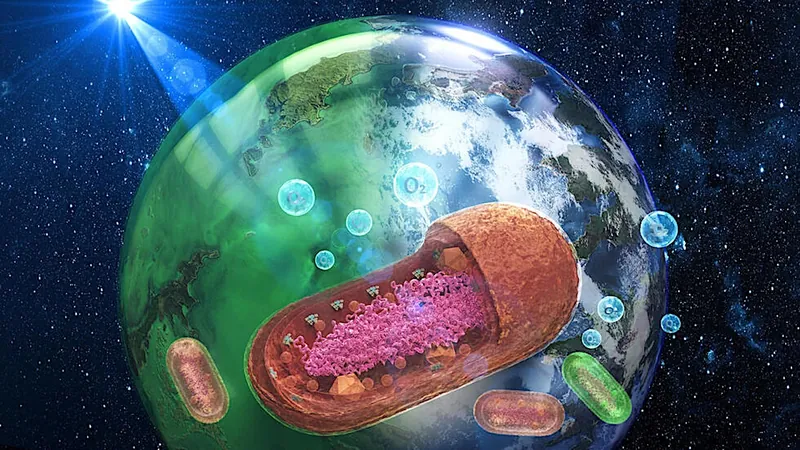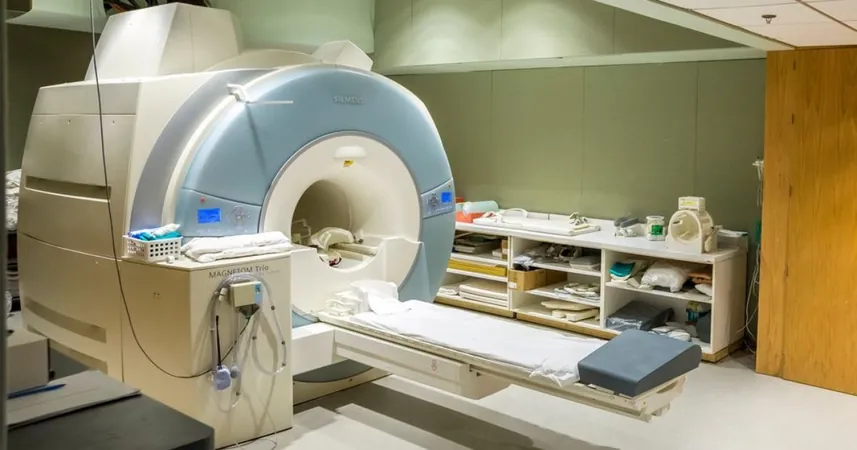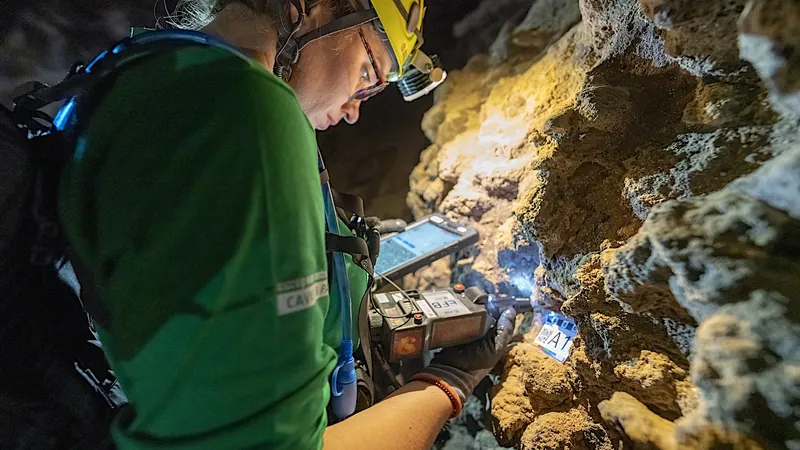
Could Earth's Blue Oceans Have Once Been Green? Scientists Explore Intriguing Hypothesis!
2025-03-30
Author: Yu
Recent groundbreaking research from Nagoya University in Japan suggests that our planet's oceans might not always have been the deep blue we see today.
Led by Taro Matsuo, the team found evidence that ancient seas may have been green, hinting at the existence of primitive life forms and raising fascinating questions about the potential for life on other planets.
Picture the stunning transformation of Earth’s oceans: from vibrant blue to verdant green.
This remarkable possibility stems from discoveries concerning cyanobacteria, crucial organisms in our evolutionary history. The research, published in *Nature Ecology & Evolution*, dives into the Earth's past, particularly during the Great Oxidation Event, which took place approximately 2.4 billion years ago. At that time, cyanobacteria were pioneering oxygenic photosynthesis, initially producing oxygen as a byproduct and catalyzing a dramatic shift in Earth's atmosphere and environment.
In today’s world, plants primarily conduct oxidation, relying on chlorophyll.
However, ancient cyanobacteria possessed an additional set of pigments known as phycobilins that enhanced their ability to harness light. The research team investigated the necessity of these pigments and conducted advanced simulations to understand the drastically different underwater light conditions during the Archaean era, between 4 and 2.5 billion years ago.
During this ancient epoch, high levels of ferrous iron dissolved in the oceans created a green-tinted aquatic world.
With the onset of the Great Oxidation Event, oxygen began reacting with ferrous iron, transforming it into ferric iron, which precipitated out of solution, changing the composition of the water. As these particles absorbed blue and red light while allowing green light to pass through, the oceans became dominated by green hues.
Interestingly, genetic analyses revealed that cyanobacteria had developed a specialized protein known as phycoerythrin.
This protein was adept at absorbing green light, enabling their survival and proliferation in these previously iron-rich, green oceans.
This research not only provides insight into the history of our own planet but also ignites new hopes in the search for extraterrestrial life.
Matsuo suggests that the presence of green oceans may be a valid sign of primitive life on distant worlds. Current methods of detecting life focus largely on blue water, which has been interpreted as a sign of aquatic conditions conducive to life. However, findings imply that green oceans could possess attributes observable from vast distances, making them prime candidates in astrobiological searches.
Matsuo’s excitement over these findings underscores their implications.
"Remote-sensing data indicate that areas rich in iron hydroxide visually stand out compared to regular blue oceans," he remarked. This revelation may redefine our search parameters when exploring extraterrestrial habitats.
The study highlights the delicate interplay between Earth's surface environment and the evolution of photosynthetic organisms.
As Matsuo notes, the research marks a significant shift in understanding this co-evolution, asserting that his earlier skepticism about the green ocean hypothesis has transformed into conviction after extensive exploration and evidence-gathering.
This captivating exploration into the history of Earth's oceans and their potential implications for life beyond our planet could reshape scientific perspectives.
As researchers continue to piece together geological and biological puzzles, the prospect of ancient green oceans becomes less of a fantasy and more of an extraordinary reality waiting to be fully unveiled.




 Brasil (PT)
Brasil (PT)
 Canada (EN)
Canada (EN)
 Chile (ES)
Chile (ES)
 Česko (CS)
Česko (CS)
 대한민국 (KO)
대한민국 (KO)
 España (ES)
España (ES)
 France (FR)
France (FR)
 Hong Kong (EN)
Hong Kong (EN)
 Italia (IT)
Italia (IT)
 日本 (JA)
日本 (JA)
 Magyarország (HU)
Magyarország (HU)
 Norge (NO)
Norge (NO)
 Polska (PL)
Polska (PL)
 Schweiz (DE)
Schweiz (DE)
 Singapore (EN)
Singapore (EN)
 Sverige (SV)
Sverige (SV)
 Suomi (FI)
Suomi (FI)
 Türkiye (TR)
Türkiye (TR)
 الإمارات العربية المتحدة (AR)
الإمارات العربية المتحدة (AR)